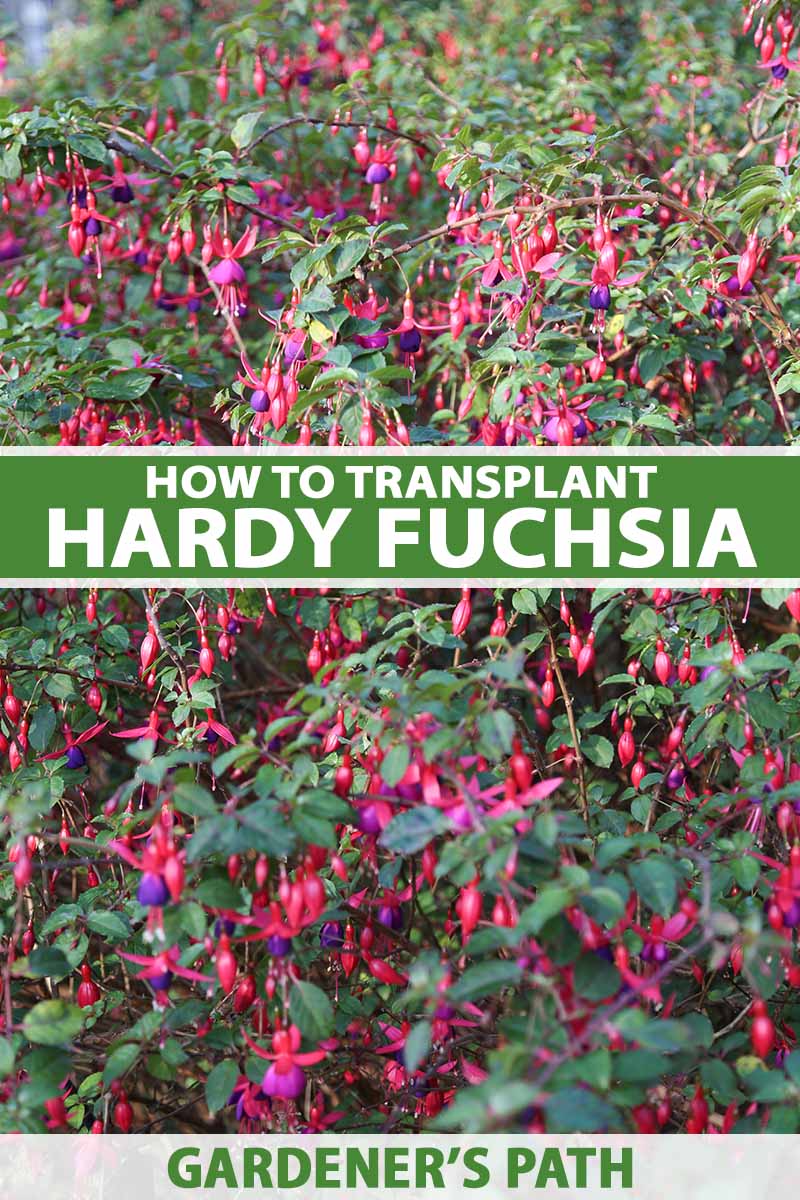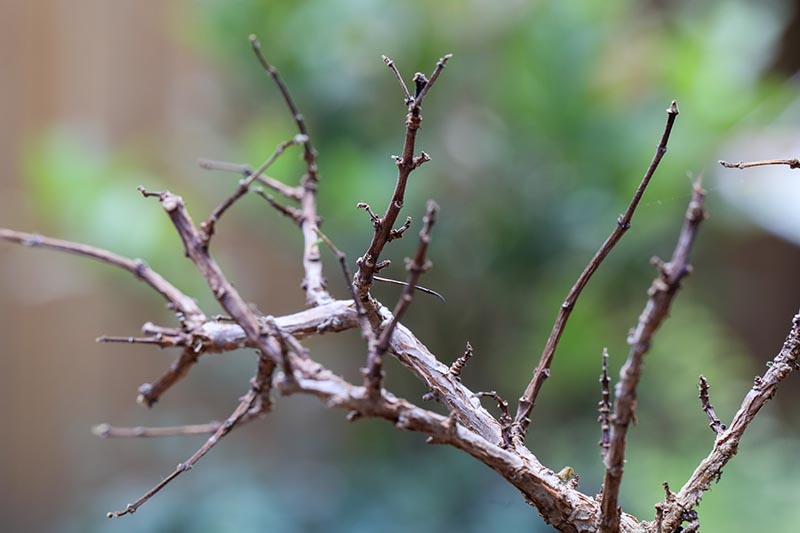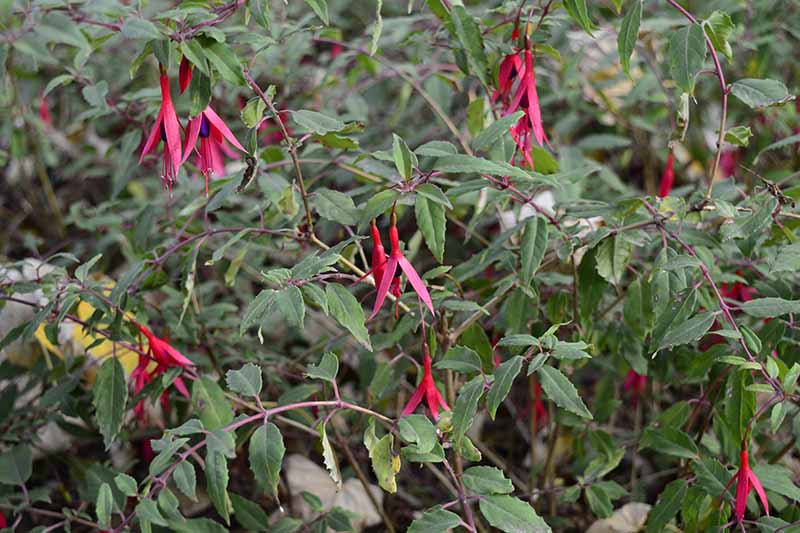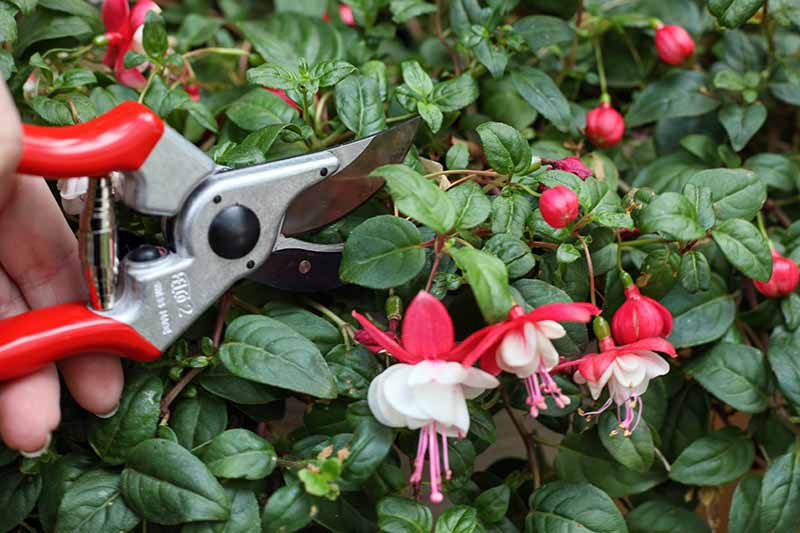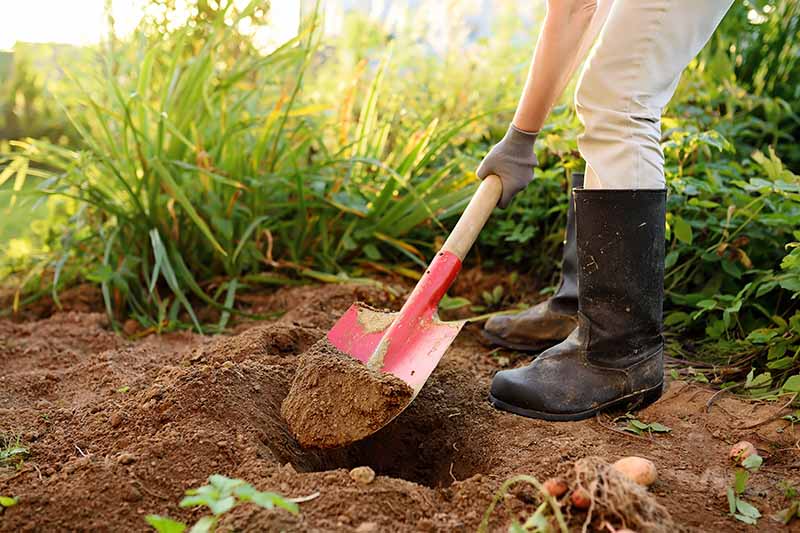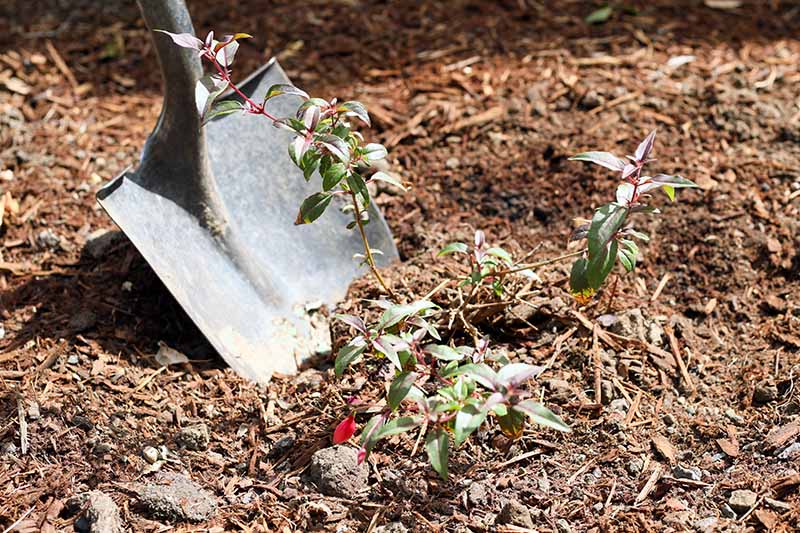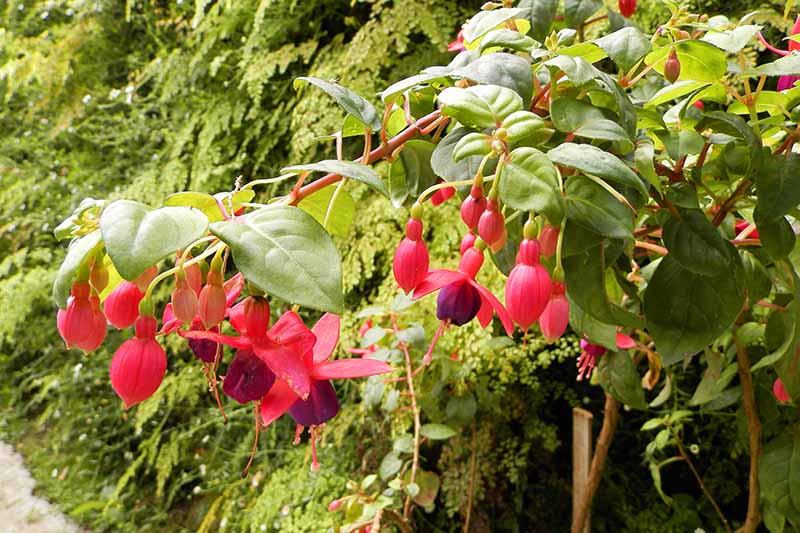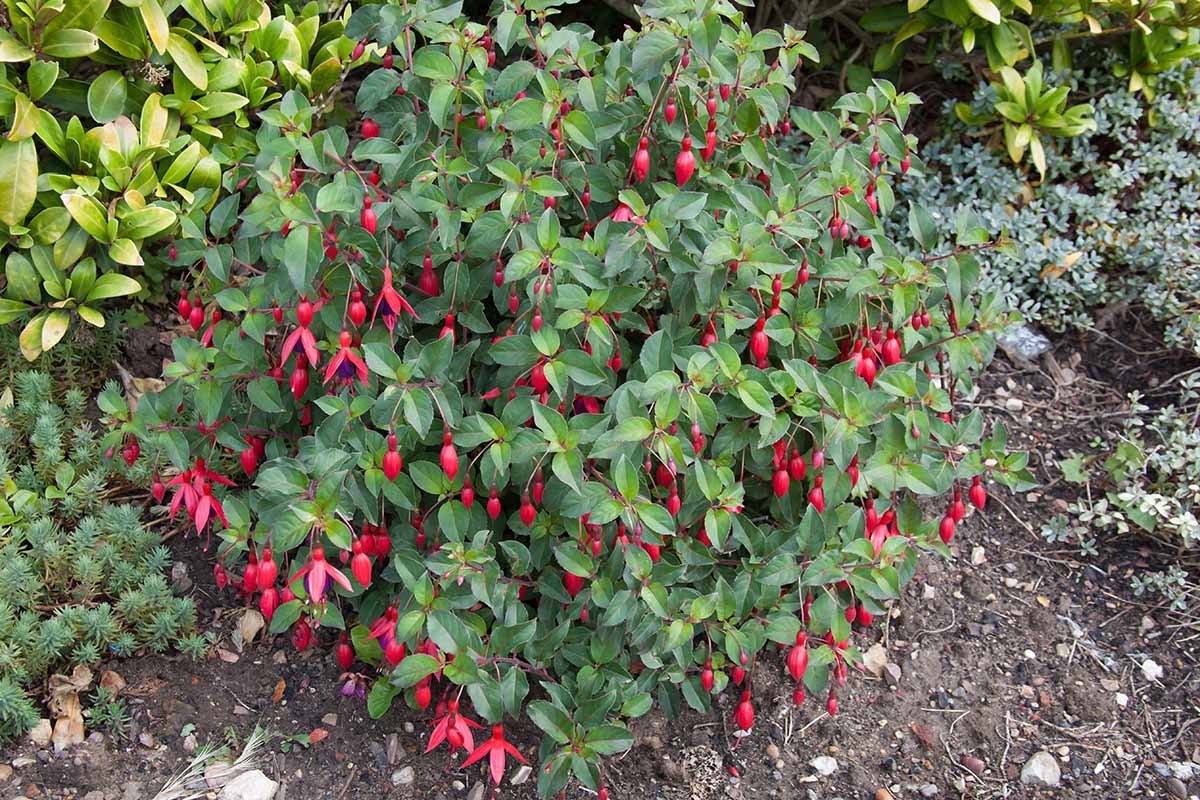Maybe you didn’t realize how big the bush would grow to be, or perhaps it’s in an awkward spot that prevents you from making your garden look exactly the way you want it to. Maybe you put a fuchsia in a shady nook on the north side of your property, but you’ve found that it doesn’t receive enough sun to produce an abundance of those those oh-so-unique blossoms. We link to vendors to help you find relevant products. If you buy from one of our links, we may earn a commission. Whatever the reason, you have a fuchsia that needs to move. Fortunately for you, I’ve made more than my fair share of fuchsia planting mistakes in the past, so I’m a pro now at transplanting them. You’re welcome. To help you to keep your fuchsia happy and healthy through its big move, here’s what we are going to discuss: If it’s time to transplant, then let’s not wait one minute more. Here we go!
When to Move Fuchsias
You can move your fuchsia at any time that the soil can be worked, but for the best chance of success, spring or fall is ideal. If you plan to move it in the spring, be sure to do it before the foliage emerges. In the fall, wait until the leaves have fallen off the bush. When the leaves are off the bush, it’s dormant and less likely to be disturbed by a move. If you can’t wait until it has gone dormant, that’s okay. You can still move it. Just take care not to do it on a day that is extremely hot. Ideally, the temperature should be under 60°F. In either season, cloudy days are best for transplanting, to avoid drying out the roots in the harsh sun.
How to Prepare for the Big Move
Before you start tugging your fuchsia out of the ground, you will need to do some prep work. This involves digging the new hole and cutting back the bush you want to move. Trim it back by about a third to a half. Because you’ll be reducing the overall size of the roots, you also need to reduce the length and number of stems and branches that those roots are supplying food and water to. This is especially important if your plant hasn’t already gone dormant. Make sure to remove any blossoms as well. (I know, it hurts, but you can eat them so they don’t go to waste!) See our guide to fuchsia pruning for more tips. Now, it’s time to prep the new location. Assume that the root ball is going to be as wide as the branches and foliage on the existing plant above ground, and two-thirds as deep as the existing bush. Dig a hole that is slightly larger than this – we’re talking a few inches wide and a few inches deeper. If you have particularly sandy or clay soil, this is a good time to amend it. Dig another foot or more both wide and deep to expand the hole further. Take all that soil you’ve dug out, and work in lots of well-rotted compost until the soil feels rich and loamy. Then, put it back in the hole until it is deep enough that the bush you’re moving will sit just an inch or two below the height it was sitting at before. Water your plant well the night before you intend to move it. You want the soil to hold together as much as possible, and to ensure that the poor thing isn’t stressed any more than it has to be.
Transplanting Your Fuchsia
Now it’s time for the big move. Get out a spade (and a tarp, if your bush is particularly large) and put on your gardening gloves. Start digging around the perimeter of the plant at the drip line. Dig down two-thirds as deep as the bush was tall before you trimmed it down, or about as tall as it is now after pruning. For large plants, this might not be possible, but try to get as much of the root ball as you can. Dig all the way around the drip line until you’ve dug around the entire perimeter. Your goal is not to remove any excess soil. Just stick the spade into the ground to sever the roots so the whole thing will lift out easily. Then, wedge the shovel as far under the plant as you can, and tilt the shovel handle back towards yourself. This will create leverage to help push the root ball up and out of the hole. You might need to do this in several different spots to release all of the roots. Carry your plant to its new location, use a wheelbarrow, or put it on the tarp and drag it over if it’s too heavy to carry. Place the bush in the new hole that you dug so that it is sitting just slightly deeper than it was in its original location. Fill in around the roots with the removed soil. Tamp it down gently and water deeply.
Aftercare Tips
For the next few months, you will need to be extra diligent about keeping the plant watered. Your fuchsia has been shocked by the move and had its root structure reduced, so you want to do your best to make the transition as gentle as possible. That said, if you transplanted when it was dormant, it shouldn’t need as much water as it does when it’s actively growing. If the soil feels dry an inch or two down, it’s time to water. Check the soil after you water – it should feel like a well wrung-out sponge throughout the planting area a few hours later. If you moved your plant when it was a bit warmer, you’ll need to take some extra precautions. On hot days (anything above 70°F) or throughout particularly dry spells, mist the foliage. You should also keep the soil constantly moist under these conditions. Don’t let it dry out more than an inch down. Learn more about watering fuchsia plants in our guide. Don’t fertilize for the first few months if you move your plant in the spring. For fall transplanting, don’t fertilize until flower buds begin to form the following spring. If your fuchsia has leaves when you transplant, don’t be surprised if some turn yellow or fall off. These plants drop leaves when they’ve experienced a shock. So long as the bush is cared for attentively, they’ll grow back. The bush might not send out blossoms right away either, but again, this is normal. The keys to keeping your fuchsia alive are to dig up as much of the roots as possible, and provide extra support for the first few weeks after the big transition. The results will be well worth it! Let us know in the comments section below if you run into any issues along the way, or if you have stories or tips to share. Now that you’re a transplanting master, you might want to read some of our other fuchsia growing guides to learn more about these fascinating flowers, such as:
How to Grow Fabulous FuchsiaHow to Grow Hardy Fuchsia Shrubs in the Home GardenHow to Harvest and Save Fuchsia SeedsDo Fuchsias Need Deadheading?
